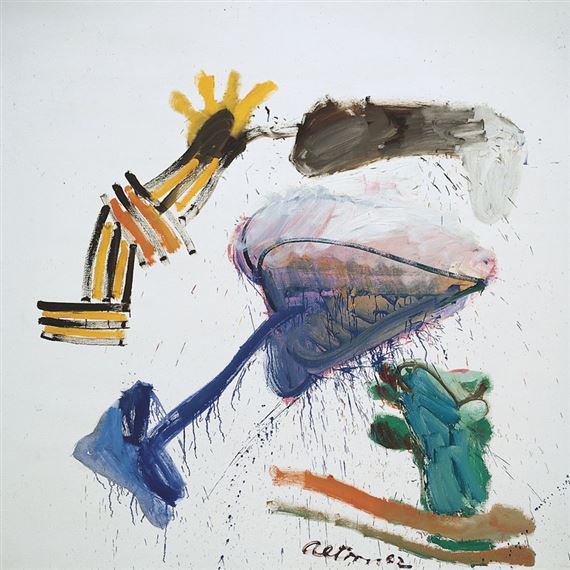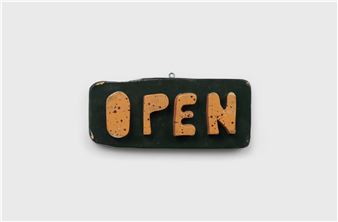Alternate Realities: Altoon, Diebenkorn, Lobdell, Woelffer
Abstract expressionism is an innovation closely associated with art of the mid-20th century, a period when new gestural approaches to painting rendered even the artist’s brush obsolete. Yet many followers of this movement did not reject representation outright. Instead they forged a productive dialogue between the two modes, incorporating references to recognizable imagery and emphasizing the artist’s own process as an alternate approach to realistic depiction.
This exhibition focuses on four groundbreaking painters who were active in Los Angeles or the Bay Area in the 1950s and 1960s and who deployed figuration in an otherwise abstract vocabulary. Richard Diebenkorn painted richly colored, nonrepresentational pictures for nearly a decade before turning to still lifes, interiors and figure studies in the mid-1950s. He and Frank Lobdell shared a commitment to life drawing, and both painters honed their treatment of light and shade through a weekly practice of sketching the nude. John Altoon, a trained illustrator, developed idiosyncratic arrangements that allude to body parts, organic objects, even a pair of striped pants, while refusing to cohere into legible narratives. Emerson Woelffer created compositions with torn paper and painted pictographic marks using a method he termed “abstract surrealism,” in which shapes emerge unconsciously through the act of making.
Drawn entirely from the Norton Simon Museum’s expansive holdings of postwar American art, Alternate Realities explores the ways in which artists challenged the limitations of pure, gestural abstraction by exploiting the resonance of figural forms.

Recommended for you
Abstract expressionism is an innovation closely associated with art of the mid-20th century, a period when new gestural approaches to painting rendered even the artist’s brush obsolete. Yet many followers of this movement did not reject representation outright. Instead they forged a productive dialogue between the two modes, incorporating references to recognizable imagery and emphasizing the artist’s own process as an alternate approach to realistic depiction.
This exhibition focuses on four groundbreaking painters who were active in Los Angeles or the Bay Area in the 1950s and 1960s and who deployed figuration in an otherwise abstract vocabulary. Richard Diebenkorn painted richly colored, nonrepresentational pictures for nearly a decade before turning to still lifes, interiors and figure studies in the mid-1950s. He and Frank Lobdell shared a commitment to life drawing, and both painters honed their treatment of light and shade through a weekly practice of sketching the nude. John Altoon, a trained illustrator, developed idiosyncratic arrangements that allude to body parts, organic objects, even a pair of striped pants, while refusing to cohere into legible narratives. Emerson Woelffer created compositions with torn paper and painted pictographic marks using a method he termed “abstract surrealism,” in which shapes emerge unconsciously through the act of making.
Drawn entirely from the Norton Simon Museum’s expansive holdings of postwar American art, Alternate Realities explores the ways in which artists challenged the limitations of pure, gestural abstraction by exploiting the resonance of figural forms.
Artists on show
Contact details

Related articles
Fantastical works by an acclaimed Japanese artist, a look back at a submerged prehistoric Los Angeles and an exploration of frescoes in Renaissance-era Rome make our May list of exhibitions across Southern California.
Now on view in Pasadena, this exhibition explores how four artists challenged the limitations of gestural abstraction by exploiting the resonance of figural forms.
The Norton Simon Museum presents Alternate Realities, an exhibition focusing on four groundbreaking painters who were active in Los Angeles or the Bay Area in the 1950s and 1960s...
“Alternate Realities” at the Norton Simon Museum presents the work of four California painters from the mid-20th century: John Altoon, Richard Diebenkorn, Frank Lobdell and Emerson Woelffer.

 ARTISTS
ARTISTS















